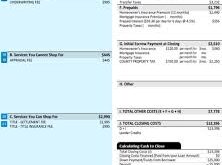Mortgage Loan Definition: Understanding Home Financing. A mortgage loan is a type of loan specifically used to purchase real estate, where the property itself serves as collateral. This means that if the borrower fails to make payments, the lender has the right to seize the property through foreclosure.
How Does a Mortgage Loan Work?
Mortgage loans function as long-term financing, typically spanning 15 to 30 years. The borrower agrees to repay the loan in monthly installments, which include principal and interest. Additional costs, such as property taxes and homeowner’s insurance, are often included in the mortgage payment.
Key Components of a Mortgage Loan
- Principal – The original loan amount borrowed.
- Interest Rate – The percentage charged by the lender for borrowing the money.
- Loan Term – The duration of the mortgage, commonly 15, 20, or 30 years.
- Down Payment – An upfront payment made by the borrower, typically ranging from 3% to 20% of the property’s value.
- Escrow Account – A fund managed by the lender to cover property taxes and insurance costs.
- Amortization Schedule – A breakdown of payments showing how much goes toward principal and interest over time.
Types of Mortgage Loans
1. Conventional Mortgage
A traditional loan not backed by the government. Requires a higher credit score and a larger down payment.
2. FHA Loan
Insured by the Federal Housing Administration, designed for low-to-moderate-income borrowers with lower credit scores.
3. VA Loan
A loan guaranteed by the Department of Veterans Affairs, available to military service members and veterans with no down payment required.
4. USDA Loan
A loan offered by the U.S. Department of Agriculture for rural homebuyers, often with zero down payment.
5. Jumbo Loan
A mortgage that exceeds conventional loan limits, designed for high-value properties.
Steps to Getting a Mortgage Loan
- Assess Your Financial Situation – Review your credit score, debt-to-income ratio, and savings.
- Get Pre-Approved – Obtain a pre-approval letter from a lender to understand your borrowing capacity.
- Find a Home – Work with a real estate agent to locate a suitable property.
- Apply for a Mortgage – Submit necessary documents, including proof of income, assets, and employment history.
- Loan Processing & Underwriting – The lender verifies financial details and assesses risk.
- Loan Approval & Closing – Once approved, you sign final documents and receive the funds to purchase the home.
10 Tips for Securing the Best Mortgage Loan
- Improve Your Credit Score – A higher score results in better loan terms.
- Save for a Down Payment – A larger down payment reduces loan costs.
- Compare Lenders – Different lenders offer varying interest rates and terms.
- Get Pre-Approved Early – This strengthens your bargaining position.
- Consider Loan Types – Choose a loan that fits your financial situation.
- Lock in Your Interest Rate – Protects against rate fluctuations.
- Understand Closing Costs – Be aware of additional fees before finalizing the loan.
- Keep Your Debt Low – A lower debt-to-income ratio improves approval chances.
- Read the Fine Print – Know all terms and conditions before signing.
- Consult a Mortgage Broker – Professional advice can help you find the best deal.
10 Frequently Asked Questions (FAQs) About Mortgage Loans
- What is the minimum credit score for a mortgage loan?
- Conventional loans typically require a score of 620+, while FHA loans accept lower scores.
- How much down payment is needed for a mortgage?
- It varies; FHA loans allow as low as 3.5%, while conventional loans require 5%–20%.
- What is the difference between pre-qualification and pre-approval?
- Pre-qualification is an estimate, while pre-approval is a formal lender commitment.
- Can I get a mortgage with bad credit?
- Yes, but you may face higher interest rates and fewer loan options.
- How do I lower my mortgage interest rate?
- Improve your credit, make a larger down payment, or choose a shorter loan term.
- What are closing costs?
- Fees for processing, underwriting, and legal documentation, typically 2%–5% of the loan amount.
- What is PMI (Private Mortgage Insurance)?
- Required for loans with less than 20% down payment to protect the lender.
- Can I pay off my mortgage early?
- Yes, but some loans have prepayment penalties, so check with your lender.
- What happens if I miss a mortgage payment?
- Late fees apply, and multiple missed payments could lead to foreclosure.
- How do I refinance a mortgage?
- Apply with a lender to replace your current loan with a new one, often to secure a lower interest rate.
Conclusion
A mortgage loan is a crucial financial tool that enables individuals to own property without paying the full price upfront. By understanding different loan types, terms, and requirements, borrowers can make informed decisions to secure the best possible financing.
Taking the time to research and prepare before applying for a mortgage can lead to better loan terms, lower monthly payments, and a smoother homebuying process. By following the tips and addressing common concerns, you can confidently navigate the mortgage loan process and achieve your homeownership goals.
 mortgage.kbk.news
mortgage.kbk.news
